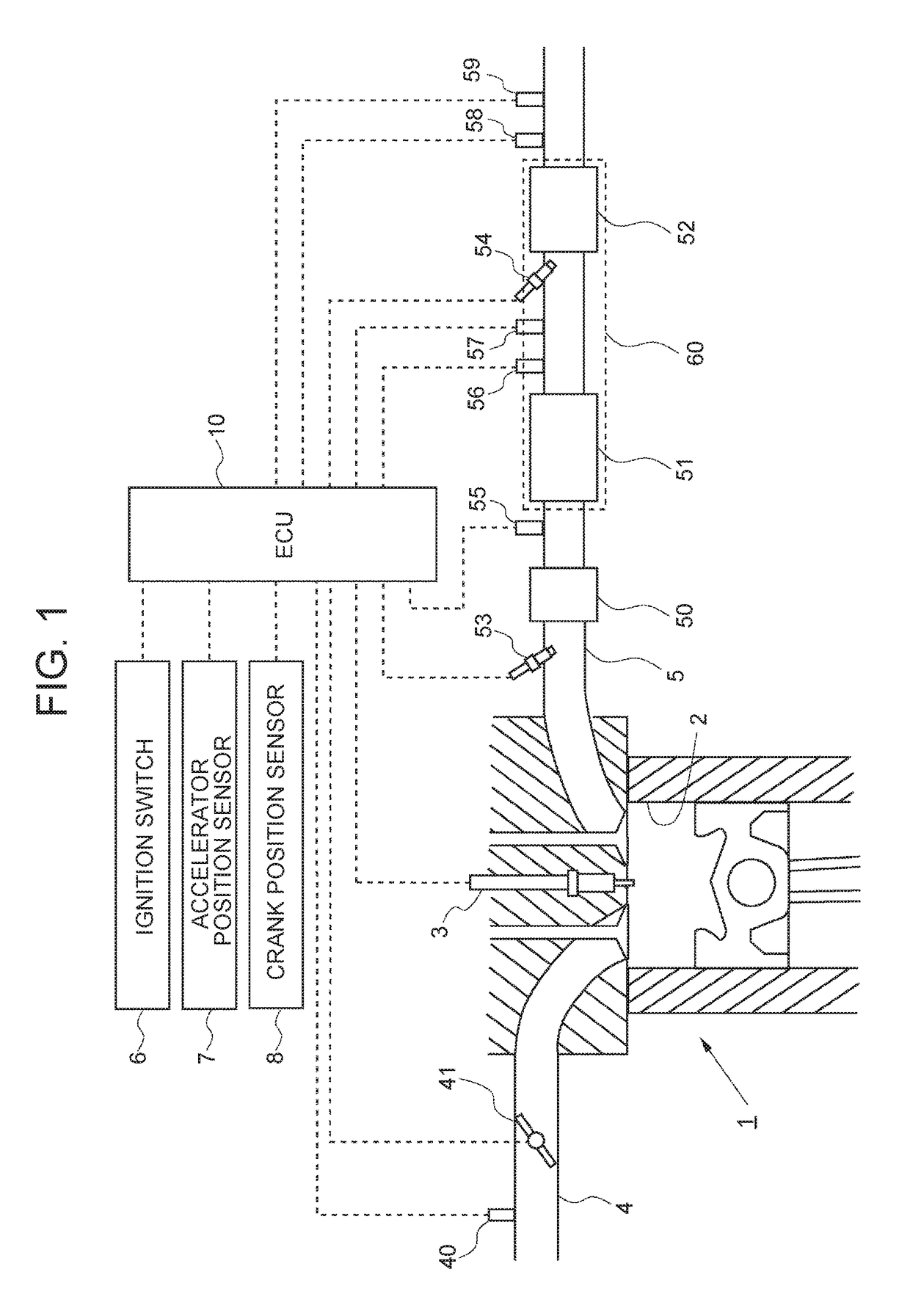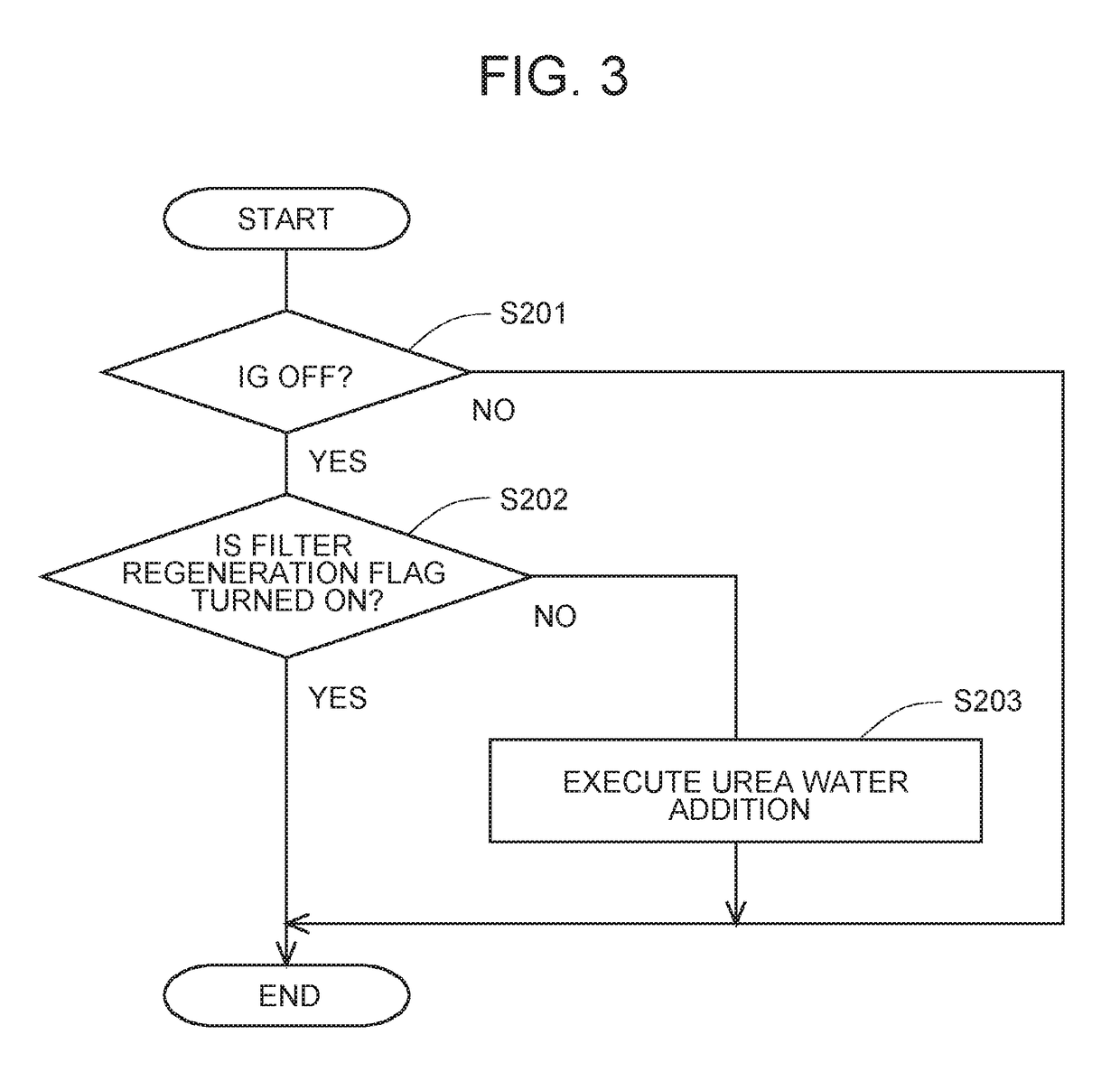Exhaust gas control system for internal combustion engine
a control system and exhaust gas technology, applied in the direction of engines, machines/engines, mechanical equipment, etc., can solve the problems of ablation of the scr catalyst temperature, the temperature of the exhaust gas control element but also the temperature of the scr catalyst inevitably increases, etc., to reduce the quantity of ammonia discharged and enhance the nox purification rate
- Summary
- Abstract
- Description
- Claims
- Application Information
AI Technical Summary
Benefits of technology
Problems solved by technology
Method used
Image
Examples
first embodiment
[0028]FIG. 1 illustrates a schematic configuration of an internal combustion engine and an intake and exhaust system thereof according to the present embodiment. The internal combustion engine 1 illustrated in FIG. 1 is a compression ignition type internal combustion engine (diesel engine) that uses gas oil as fuel. However, the present disclosure is also applicable to a spark ignition type internal combustion engine that uses fuel such as gasoline.
[0029]The internal combustion engine 1 includes a fuel injection valve 3 that injects fuel into a cylinder 2. When the internal combustion engine 1 is a spark ignition type internal combustion engine, the fuel injection valve 3 may be configured to inject fuel to an inlet port.
[0030]The internal combustion engine 1 is connected to an intake passage 4. The intake passage 4 is provided with an air flowmeter 40 and a throttle valve 41. The air flowmeter 40 outputs an electrical signal corresponding to the quantity (mass) of intake gas (air) ...
second embodiment
[0075]FIG. 7 illustrates a schematic configuration of an internal combustion engine and an intake and exhaust system thereof according to the embodiment. In the present embodiment, the filter 51 in the first embodiment is replaced with an occlusion reduction NOx catalyst 71 (which may also be referred to as “NSR catalyst 71” below) provided downstream from the oxidation catalyst 50 and upstream from the upstream temperature sensor 56 in the exhaust passage 5. The NSR catalyst 71 has a function to occlude NOx in exhaust gas when an air-fuel ratio of the circumferential atmosphere is a lean air-fuel ratio and to reduce occluded NOx when the air-fuel ratio in the circumferential atmosphere is a rich air-fuel ratio. Here, the term “occlusion” includes a meaning of temporary “adsorption” of NOx onto the NSR catalyst 71. Hereinafter, the NSR catalyst 71 and the SCR catalyst 52 may integrally be referred to as an exhaust gas control apparatus 70. In the present embodiment, the ECU 10 also ...
modified example
[0097]Also in the present embodiment, even in the case where operation of the internal combustion engine 1 is stopped while the SOx poisoning recovery treatment is not executed, it is not necessary to newly adsorb ammonia onto the SCR catalyst 52 after the operation stop of the internal combustion engine 1 when a sufficient quantity of ammonia is already adsorbed onto the SCR catalyst 52 at the moment when the operation of the internal combustion engine 1 is stopped. In short, it is not necessary to add urea water from the urea water addition valve 54 after the operation stop of the internal combustion engine 1.
[0098]Accordingly, in the present embodiment, in the case where operation of the internal combustion engine 1 is stopped while the SOx poisoning recovery treatment is not executed as in the modified example of the first embodiment, addition of the urea water from the urea water addition valve 54 after the operation stop of the internal combustion engine 1 may be executed only...
PUM
 Login to View More
Login to View More Abstract
Description
Claims
Application Information
 Login to View More
Login to View More - R&D
- Intellectual Property
- Life Sciences
- Materials
- Tech Scout
- Unparalleled Data Quality
- Higher Quality Content
- 60% Fewer Hallucinations
Browse by: Latest US Patents, China's latest patents, Technical Efficacy Thesaurus, Application Domain, Technology Topic, Popular Technical Reports.
© 2025 PatSnap. All rights reserved.Legal|Privacy policy|Modern Slavery Act Transparency Statement|Sitemap|About US| Contact US: help@patsnap.com



